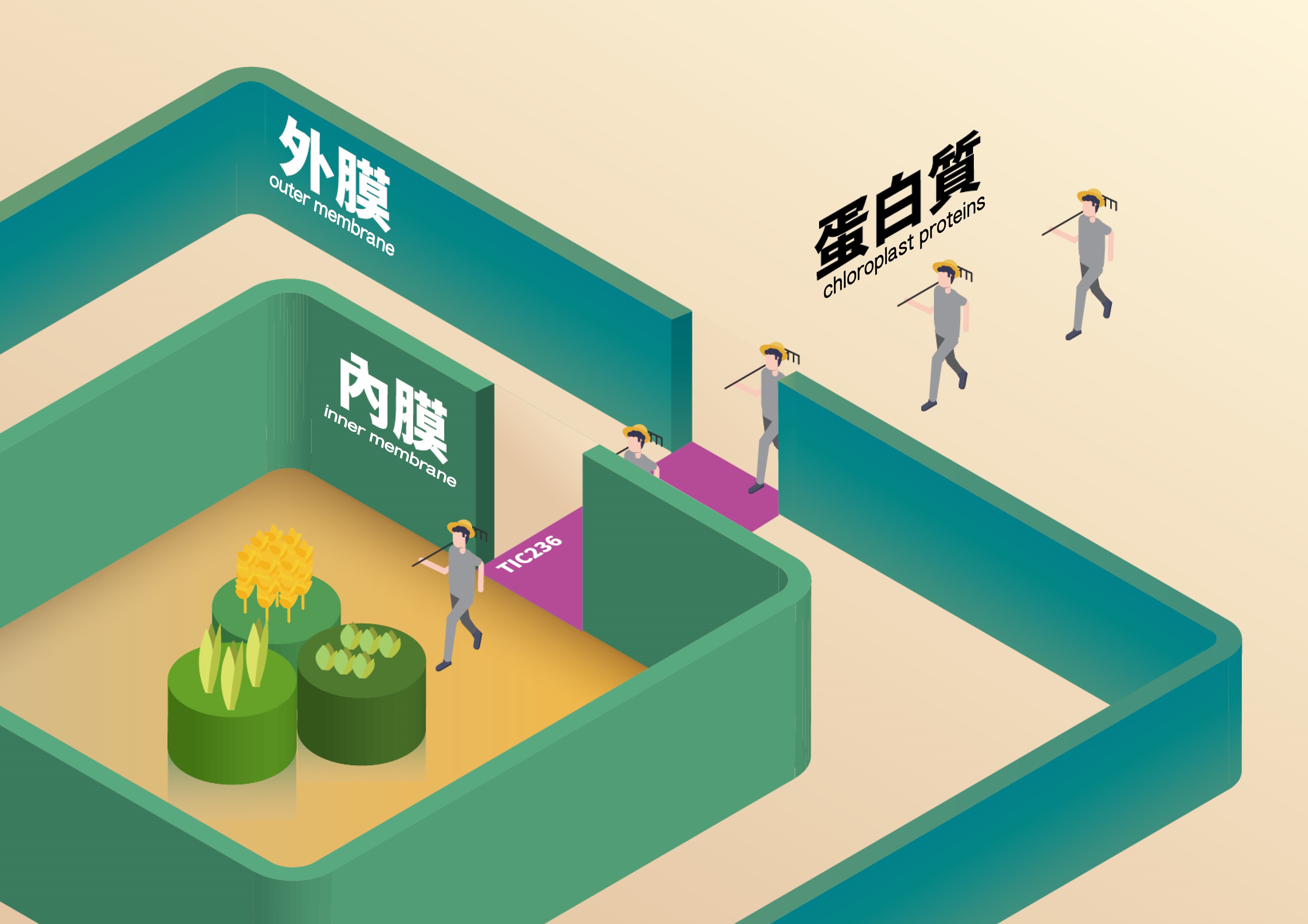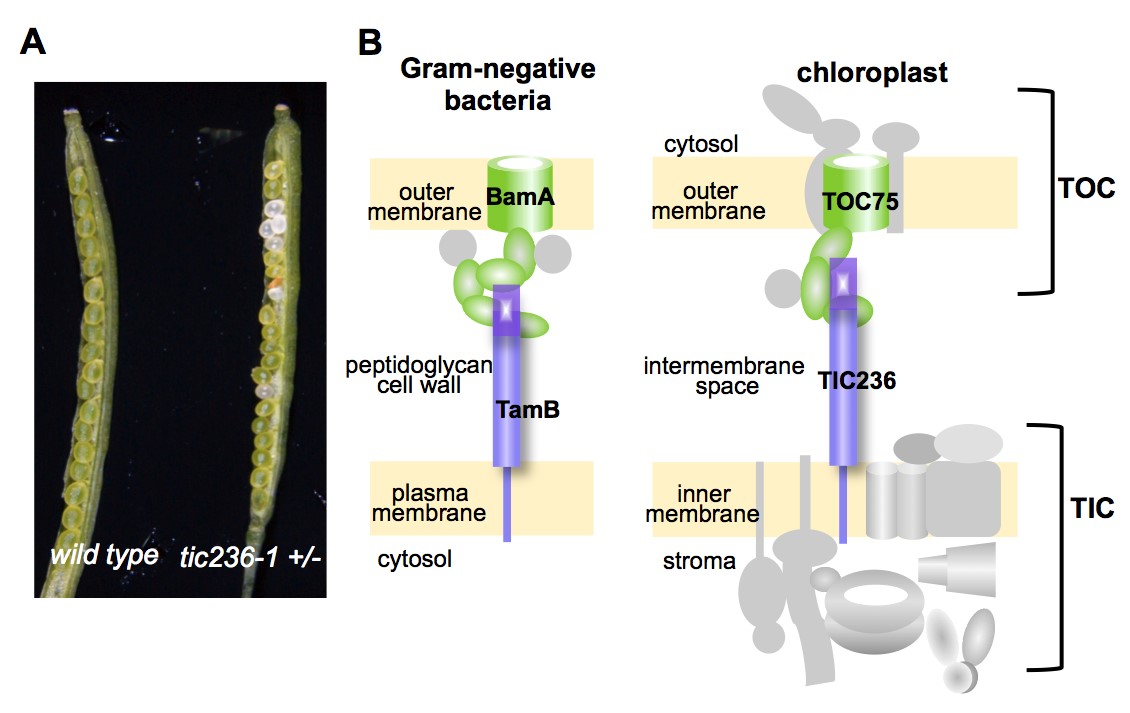Dr. Hsou-min Li identified the protein-transporting bridge TIC236 linking the chloroplast outer and inner envelope membranes
Photosynthesis, carried out by chloroplasts in plant cells, is the ultimate source of all human food. To perform photosynthesis, chloroplasts need to import more than 2000 different kinds of proteins from the cytosol. These proteins need to cross the outer and the inner envelope membranes surrounding the chloroplast. Dr. Hsou-min Li’s lab has identified the protein-transporting bridge TIC236, which links that chloroplast outer and inner envelope membranes.

The two-membrane envelope is a defining feature of chloroplasts. Chloroplasts evolved from a Gram-negative cyanobacterial endosymbiont. Proteins are transported into chloroplasts by the TOC and TIC (translocons at the outer and inner envelope membranes of chloroplasts, respectively) machineries but how TOC and TIC are assembled together was unknown. Dr. Hsou-min Li’s lab identified the protein which links TOC with TIC and named the protein TIC236. (A) TIC236 is essential for protein import into chloroplasts and its knockout mutation is embryonically lethal, resulting in albino and aborted seeds. (B) Evolutionary analyses suggest that TIC236 and the outer-membrane channel TOC75 are homologs of bacterial secretion machinery proteins TamB and BamA, respectively. Hence Dr. Li’s results revealed that the backbone of the chloroplast protein import machinery evolved from a bacterial secretion system.
